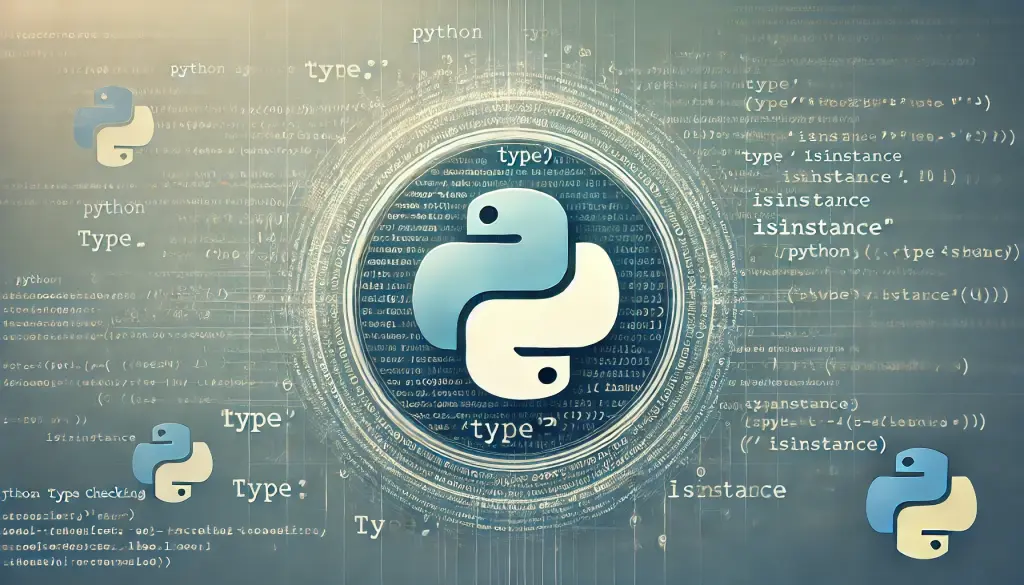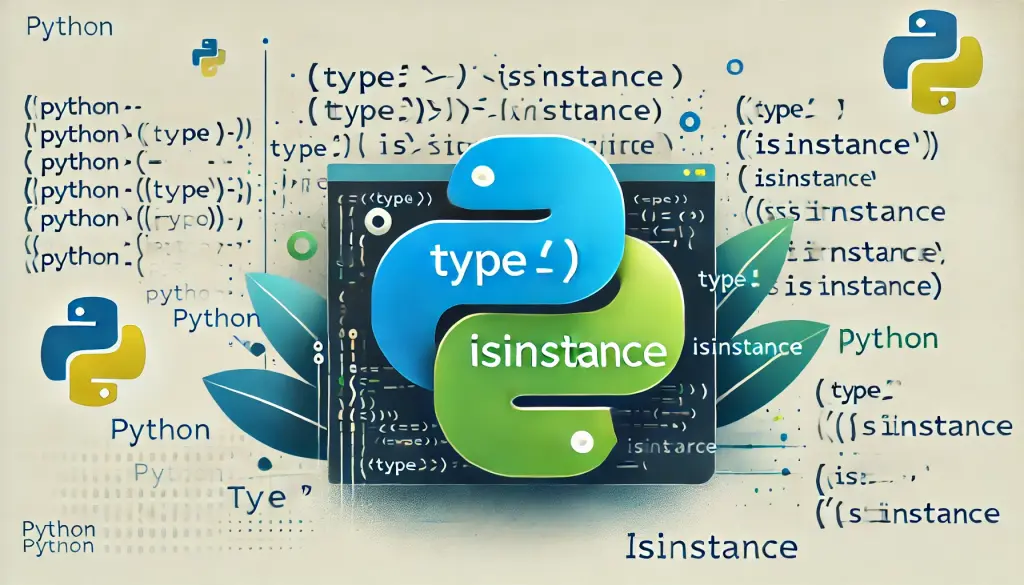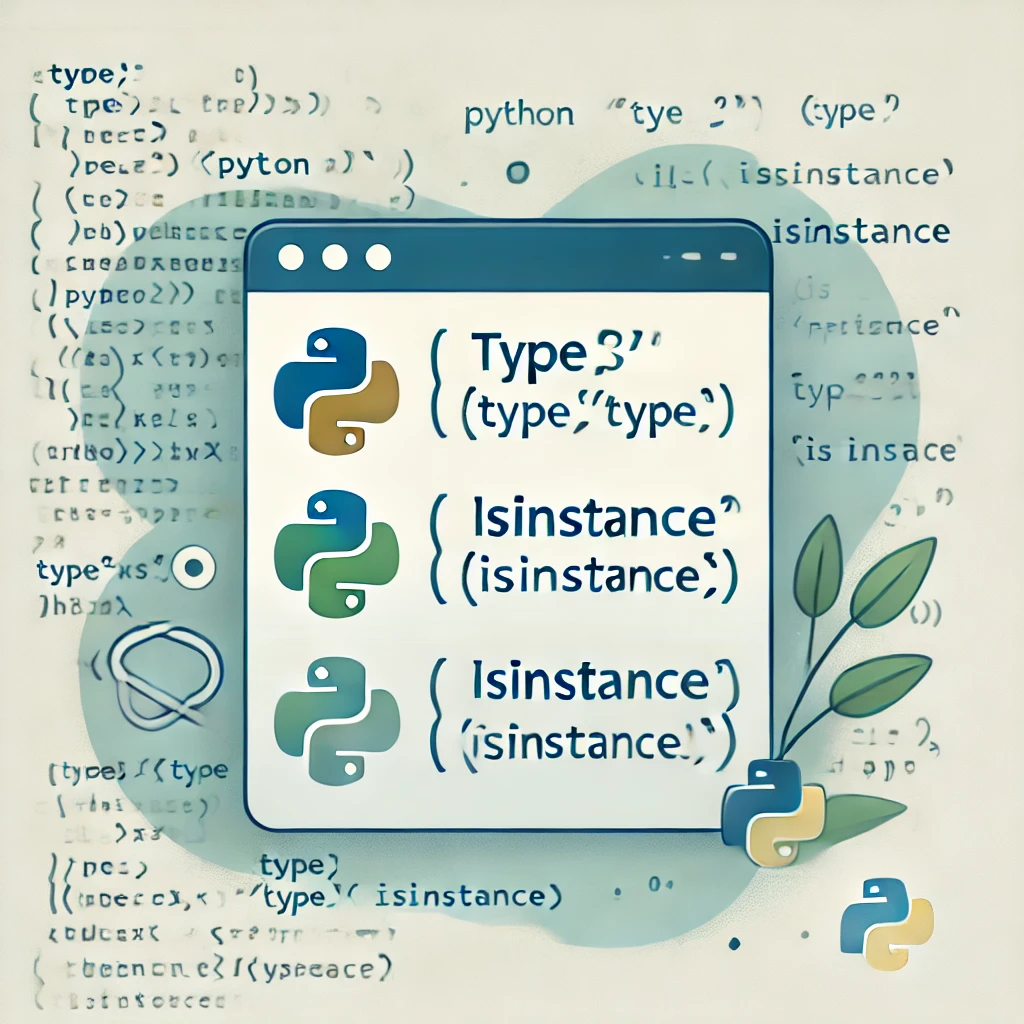目次
1. Introduction
Why is type checking important in Python? Python is a dynamically typed language, meaning that the type of a variable or object is determined at runtime. Thanks to its flexible design, you don’t need to explicitly declare types. However, this flexibility can also cause unexpected type errors or runtime issues. Therefore, type checking is crucial for maintaining the reliability and stability of Python programs. In this article, we will explain the main type-checking methods in Python, includingtype(), isinstance(), and other advanced techniques.Ad
2. Overview of Data Types in Python
Python provides various data types such as numbers, strings, lists, and dictionaries. Each type has specific use cases, and performing type checks helps prevent unexpected errors.Main Data Types
- Numeric Types (int, float) Numeric types include
intfor integers andfloatfor decimal numbers.
num1 = 10
num2 = 3.14
print(type(num1)) # <class 'int'>
print(type(num2)) # <class 'float'>- String Type (str) Used to store text data, defined by enclosing text in single or double quotes.
text = "Hello, World!"
print(type(text)) # <class 'str'>- List Type (list) A list is an ordered collection that can store multiple elements. Lists are defined using
[]and support many operations.
mylist = [1, 2, 3, 4]
print(type(mylist)) # <class 'list'>- Dictionary Type (dict) Dictionaries store data as key-value pairs, defined using
{}.
mydict = {"one": 1, "two": 2}
print(type(mydict)) # <class 'dict'>
3. Checking Types with the type() Function
The type() function is a basic built-in function used to retrieve the type of a given object. It’s very useful for quickly identifying object types.Basic Usage of type()
The following example checks the type of a variable using type():myvar = 1234
print(type(myvar)) # <class 'int'>mystr = "Hello"
print(type(mystr)) # <class 'str'>Advantages and Limitations of type()
While type() makes type checking simple, it does not account for subclasses. It only checks for exact matches with the specified type.class Animal:
pass
class Dog(Animal):
pass
dog = Dog()
print(type(dog) == Animal) # FalseDog inherits from Animal, type() returns False. To include subclass checks, use isinstance(), introduced next.Ad
4. Checking Types with the isinstance() Function
The isinstance() function checks if an object is an instance of a specific type or its subclass. This allows more flexible type checking with inheritance support.Basic Usage of isinstance()
Example of using isinstance() to check the type of a variable:myvar = 1234
print(isinstance(myvar, int)) # Truemyvar is an int, it returns True.Checking Against Multiple Types
isinstance() can check against multiple types by passing them as a tuple:value = 3.14
print(isinstance(value, (int, float))) # TrueChecking Subclasses
Becauseisinstance() supports subclasses, it can confirm inheritance relationships as well:class Animal:
pass
class Dog(Animal):
pass
dog = Dog()
print(isinstance(dog, Animal)) # TrueDog inherits from Animal, it returns True.
5. Other Methods of Type Checking
Besidestype() and isinstance(), Python provides other ways to check types. These can be chosen depending on the use case.issubclass() Function
The issubclass() function checks whether a class is a subclass of another class.class Animal:
pass
class Dog(Animal):
pass
print(issubclass(Dog, Animal)) # Truecollections.abc Module
The collections.abc module is useful for checking collection types such as lists or dictionaries. Example: verifying if a list is a Sequence.import collections.abc
mylist = [1, 2, 3]
print(isinstance(mylist, collections.abc.Sequence)) # Truetyping Module for Type Hints
The typing module introduces static type checking in Python code. It improves readability and makes debugging easier.from typing import List
def greet(names: List[str]) -> None:
for name in names:
print(f"Hello, {name}!")Checking for NoneType
NoneType is the type of the special object None. Checking for it helps prevent unexpected errors.myvar = None
print(type(myvar)) # <class 'NoneType'>NoneType checks are especially useful for confirming whether a function’s return value is None.Ad
6. Conclusion
Type checking in Python is an essential practice for writing reliable and maintainable code. While Python’s dynamic typing provides great flexibility, it also increases the risk of runtime errors. By understanding and using different type-checking methods such astype(), isinstance(), issubclass(), collections.abc, and type hints from the typing module, you can reduce unexpected issues and improve the stability of your programs. When to use which method depends on the specific situation:- Use
type()for simple, exact type checks. - Use
isinstance()when subclass relationships should be considered. - Use
issubclass()to confirm class inheritance. - Use
collections.abcto verify collection-related behavior. - Use
typingfor adding static type hints and improving code readability.





